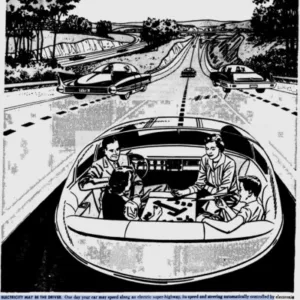 OS Yang is from Samsung Display where he looks after new business in automotive and PIDs. Following up the mention of video walls by Raikes, he said that Samsung Display sells 72% of all video wall panels. He also said that automotive is a very conservative industry because of the critical issue of safety.
OS Yang is from Samsung Display where he looks after new business in automotive and PIDs. Following up the mention of video walls by Raikes, he said that Samsung Display sells 72% of all video wall panels. He also said that automotive is a very conservative industry because of the critical issue of safety.
Although German drivers are used to having big GPS screens in their cars, over the world only 10% of cars have central displays – Japan gets to 40% and the EU and North America are around 20%.
Yang described the current displays and showed a picture of the Volvo Concept 26 (although his picture showed the large passenger size display in view, while, as we saw at MWC, a key point of the design is that the big display can be hidden away). Autonomous cars will become ubiquitous, Yang believes. although this might take ten or twenty years.
Turning back to displays, Yang said that Audi has a concept called the e-Tron will be introduced into the market. In automotive, 0.001% of the market is “old style” displays and the rest is LCD. Audi wants to introduce OLED technology and Yang said that this would be a good move for Samsung’s display business. Car makers are looking to change the concept of car interiors and he highlighted the Mercedes F015 concept which has displays on almost all of its surfaces (and Samsung can imagine how this could be further extended!)
Yang showed a picture of a new Renault Samsung which has a fascia design with a “slot-in” space for phones to be used. The phone is mounted in the car by sliding into a frame, effectively becoming part of the systems and structure.
Looking back at the development of flat displays in autos, Yang said that early displays (for example VFD) had little or no colour, then Sharp came in with LCDs that gradually improved in performance and now there are quite a few displays in cars, and almost entirely LCD-based. There will be OLEDs in the near future, Yang promised. A lot of new user interfaces and graphics types will be seen.
There are more and more sensors in the car and those will be used to feed the displays in the car and Yang said that the connected car will be very important in the Internet of Things.
Autonomous driving is an old idea already and Yang showed a graphic from 1957 from a newspaper, “The Victoria Advocate” – “all that needs to be done is implementation”, he added to some amusement from the audience.
 This is from the Victoria Advocate newspaper in March 1957. The caption says “Electricity may be the driver. One day your car may speed along an electric super highway, its speed and steering automatically controlled by electronic devices embedded in the road. Travel will be more enjoyable. It will be made safe – by electricity! No traffic jams … no collisions… no driver fatigue.”
This is from the Victoria Advocate newspaper in March 1957. The caption says “Electricity may be the driver. One day your car may speed along an electric super highway, its speed and steering automatically controlled by electronic devices embedded in the road. Travel will be more enjoyable. It will be made safe – by electricity! No traffic jams … no collisions… no driver fatigue.”
There is a clear trend from discrete flat small displays in today’s cars to large curved displays by 2018 and by 2021 there will be integration of all the displays into a single display and interaction surface. Transparent displays might be laminated into a windscreen and that is one of the reasons that Samsung is developing transparent OLEDs.
Samsung is covering both LCD and OLED and Yang thinks that will be a big advantage in dealing with automotive customers. By 2018, flexible displays will be used in cars and freeform displays by 2019. Transparent laminatable windscreens made of transparent OLEDs will mean a full integration between the main displays in the driver’s console and the “HUD” data that is presented on the windscreen.

Samsung has delivered 860 million OLEDs, with 32 million of them flexible. Auto grade technology is now available, from the end of 2015. Driving, by then, will be much more than a transportation experience.
Analyst Comment
The comment that Yang made about the idea of embedding an OLED into a windscreen was informative – it explains why Samsung Display is putting so much effort to develop its transparent OLEDs, given the small size of the early market in retail and signage. We also spoke to Beneq at Embedded World which was showing the same concept using its EL technology. (Beneq Exploits EL Advantages)
We have heard that there are legal minimum transparency requirements for windscreens at 70%. That will cause a problem if Samsung cannot get the transparency of its OLED displays up to 80% or more as there will also be glass to go through. At the moment, the displays are around 45% transparent. (BR)

